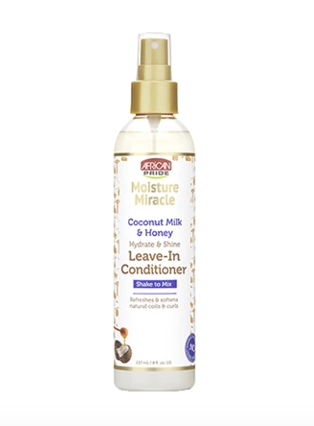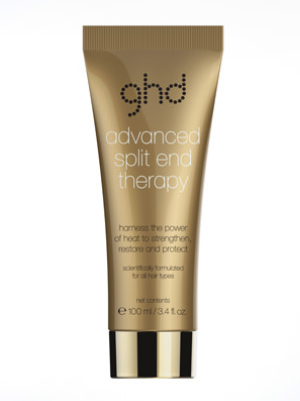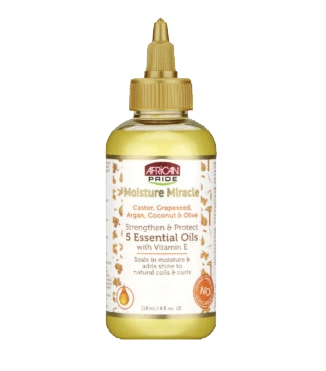How To Repair Dry & Split Ends — According To The Pros
Photographed by Jessica Garcia.
It's a regular wash day and, after a good cleanse and condition, you go about your schedule as your hair air dries. A few minutes pass, and that's when it happens: You look down in horror to find that your ends are drier than over-cooked bacon and splitting more than the cast of Cheer.
If you're still not entirely comfortable returning to the salon just yet, you could always trim your own strands to remove the problem — but the idea of wielding a pair of scissors is scary grounds for some people. Luckily, according to the professionals, you can make the situation less dire with products and at-home recommendations. Ahead, the expert tips and tricks you need to keep your ends looking fresh between now and your next salon appointment.
AdvertisementADVERTISEMENT
How To Identify Dry & Split Ends
The bottom three inches of the strand (a.k.a. your ends) have been exposed the longest vs. newer growth closer to your head, so they're usually the first to show damage over the long term. "Dry ends are normal, especially in longer hair, due to heat styling, improper conditioning, UVA/UVB damage, and free radicals, which they encounter daily," says Erica Conan, Director of Education at ColorProof Color Care Authority, "but there are ways to identify [them] quickly at home."
The texture of dry ends is typically more brittle, rough, or tangled than the rest of your hair. Conan relies on what she calls the broom test, where she take a section and holds it upright towards the sky with the last two inches sticking out. "If your hair bends downward and droops that's a good thing, but if your ends stick straight up like broom bristles, it's an indicator they lack moisture," she says.
Dry ends and split ends aren't necessarily the same thing: Split ends are a result of your ends being too dry for too long. "The hair becomes so brittle it starts to break away from itself," says Kali Ferrara, hairstylist at The Salon Project at Saks Fifth Avenue in New York City. Once spotted, it's crucial to resist splitting the ends further. "As tempting as it is, do not pull apart the splits. It will only weaken your hair and can cause breakage," Conan says.
The Right Products Can Help
AdvertisementADVERTISEMENT
Trimming is ultimately the best option when it comes to dry ends, but products can help in the meantime if cuts aren't accessible to you. Robin Groover, hairstylist and African Pride brand educator, recommends his favourite treatment combo: African Pride Moisture Miracle Leave-In Conditioner plus Miracle Moisture 5 Essential Oils. Groover mixes the two products, paints the mixture on the ends, and leaves it on for 20 minutes before rinsing. Also try ghd Advanced Split End Therapy, which leaves hair feeling soft and smooth, even after washing.
Conan suggests the ColorProof SuperRich Split Ends Mender, which can be used on dry or wet hair without weighing down the strands. "This will act as a Band-Aid to your ends and stop them from splitting higher between your haircuts," she says. Conan stresses the use of products rich in moisturising ingredients and humectants like shea butter to add and retain hydration, detangling sprays to reduce pulling, and thermal and sun protection for added preservation. Ferrera echoes the recommendation of heat-protecting products, along with bonding treatments like Olaplex, to strengthen the strands.
You'll just want to be careful that you don't add too much protein to the hair unless recommended by your stylist, Conan says. "Overuse of protein can lose elasticity, become very brittle and dry, and cause breakage," she explains.
AdvertisementADVERTISEMENT
Heat Is The Enemy
All stylists stress that you'll want to avoid or minimise the use of heat-styling tools when it comes to fending off dry ends. If you can't live without your flat iron, Ferrera suggests turning down the heat and being mindful of your process. "Do your best to turn down the temperature to the mid-high 300s, and try not to go over the same small sections more than once or twice," she says.
Conan says, "Before blow-drying, allow your hair to air-dry as long as it can. Dry on a medium to low heat with your fingers until the hair is 80% dry before introducing your brush for control. This will cut down the heat directly on your hair, and the stretching and pulling that create weak spots."
Prevention Is Key
In truth, the work should begin before your ends start to see the damage by making small changes like sleeping on silk pillowcases and working from the bottom of the hair up to remove any tangles. "You want to be very careful detangling the hair when styling," Groover says.
Conan also urges her clients to switch to a moisturising regimen with an added moisture hair mask weekly — and focusing on masks and conditioners on the ends vs. the scalp. Masks come highly recommended by Groover and Ferrera too, who both advise adding them to your regimen regardless of whether your hair is in perfect condition or not.
Ultimately, it's all about making the necessary changes and dedicating time to your strands rather than relying on quick fixes. The only real way to reduce split ends once they've happened is to cut them loose — and until then, treat your hair the same way a plant mom cares for their fiddle-leaf fig.
Refinery29's selection is purely editorial and independently chosen – we only feature items we love! As part of our business model we do work with affiliates; if you directly purchase something from a link on this article, we may earn a small amount of commission. Transparency is important to us at Refinery29, if you have any questions please reach out to us.
AdvertisementADVERTISEMENT









